
It should come as no surprise that early Reynolds trombones share many visual characteristics with contemporary H.N. White "King" trombones. In a c.1950 catalog, the company claimed that the Reynolds trombone was the result of 40 years of "study and experiments," presumably within the period of time from approximately 1904-1946, when Foster Reynolds was at H.N. White and then developing his own instruments.
In 1949, Reynolds trombone designs evidently followed the founder to California and borrowed elements from his new employer, F.E. Olds. Especially notable are the new brace and grip patterns, as well as the adoption of a bronze alloy for the Contempora instruments.
1936-1946
F.A. Reynolds (Cleveland, Ohio)
Trombones from Reynolds’ first decade of operations feature an ornate engraving pattern across the width of the bell flare. Both brass and sterling silver bells feature significant filigree with the latter adding inlay gold as well. Trombones have been reported with bell sizes of 7", 7¼" and 7½", and bore sizes of .480" or .500", but I haven't been able to nail down specific combinations to identify as unique models. For now, I've chosen to use the first-known model number, 70 (from a c.1949 catalog).
Model 70
F.A. Reynolds Tenor Trombone
Bore: .480", .500"
Bell: 7", 7¼", 7½"
Materials: brass gooseneck, tuning slide crook, tuning slide bracing and trim; nickel-silver main brace
Slide: brass outer slides with nickel-silver sleeves, mouthpiece receiver and handgrip; beveled slide lock
Finish: clear lacquer finish; optional silverplate
Optional: round counterweight/balancer
Model 70 with brass bell (c.1936)
World War II
Throughout the 1940s, F.A. Reynolds Co. was awarded contracts by the U.S. Army Quartermaster for band instruments, becoming "a major source of supply for the Armed Forces during World War II." [1977 catalog] These instruments have a silverplate finish with unique engraving and a large "U.S." mark near the rim of the bell. Known serial numbers date production from between 1940 and 1952.
These contracts allowed the relatively new company to continue focusing on making band instruments when more-established manufacturers, e.g., F.E. Olds and Conn, were forced to shut down instrument lines and produce wartime equipment. Details of the contracts are not available, and it is not specified which service bands received the instruments, though anecdotal evidence suggests that the bands of the U.S. Army Air Forces (USAAF) may have been recipients, having just organized in 1941.
F.A. Reynolds Tenor Trombone with "U.S." military engraving and silverplate finish (c.1943)
F.A. Reynolds Tenor Trombone with "U.S." military engraving and silverplate finish (c.1947)
F.A. Reynolds Tenor Trombone with "U.S." military engraving and silverplate finish (c.1950)
Note: After the Reynolds trombone line was redesigned c.1949, the tenor model produced for the U.S. military appears, based on different aging/wear appearances, to have used brass for the main tuning crook and outer slide tubes and nickel silver for the bracing and trim. This would make them materially the same as the Emperor model introduced c.1949-50.
1946-c.1949
F.A. Reynolds, division of Scherl & Roth (Cleveland, Ohio)
After Scherl & Roth took over operations in 1946, the engraving pattern changed to a vertical block lettering style. The brass bells were now much simpler than the sterling silver bells and would not have required as much “finishing” time on the production line. The change in engraving patterns happened around SN 9000.
I have been using your Reynolds Sterling Silver Bell Trombone for about six years and I shall continue to use it as long as I play trombone. Over a period of twenty-five years, I have tried eight or nine different makes and I find the Reynolds vastly superior—in balance, tonal quality, ease of playing, slide action, and all-around performance.
Model 70
F.A. Reynolds Tenor Trombone
Bore: .480", .500"
Bell: 7", 7¼", 7½"
Materials: brass gooseneck, tuning slide crook, tuning slide bracing and trim; nickel-silver main brace
Slide: brass outer slides with nickel-silver sleeves, mouthpiece receiver and handgrip; beveled slide lock
Finish: clear lacquer finish; optional silverplate
Optional: round counterweight/balancer
Model 70 with sterling silver bell (c.1946)
c.1949-1952
F.A. Reynolds, division of Scherl & Roth (Cleveland, Ohio)
Circa 1949, Reynolds redesigned the bracing on the trombone line. The new braces bear more than a passing resemblance to those made by Olds (where founder Foster A. Reynolds was working after leaving Reynolds in 1946) rather than the previously modeled King trombones. Serial number 22000 (c.1949) marks the approximate change to the updated brace design. The F.A. Reynolds models were rebranded as the Reynolds “Professional”.
Model 70
Reynolds "Professional" Tenor Trombone
Bore: .500"
Bell: 7½" brass bell
Body: nickel-silver gooseneck, tuning slide, bracing and trim; brass “R” counterweight
Slide: chrome-plated nickel silver inner slides; brass outer slides with nickel-silver sleeves and handgrip
Finish: clear lacquer finish; optional silverplate bright bell or silverplate gold bell finish.
Model 71
Reynolds "Professional" Tenor Trombone with Sterling Silver Bell
Bore: .500"
Bell: 7½" sterling silver bell
Body: nickel-silver gooseneck, tuning slide, bracing and trim; brass “R” counterweight
Slide: chrome-plated nickel silver inner slides; brass outer slides with nickel-silver sleeves and handgrip
Finish: clear lacquer finish; optional silverplate bright bell or silverplate gold bell finish.
The Reynolds trombone is the result of forty years' intensive study and experiments, embodying the most desirable features of construction which these years of experience have proven to be of value. This trombone in new proportions gives the volume and tone quality so essential for present day performances throughout the music world.
For sheer beauty of tone, perfect intonation, and easy response, the Professional is a delight to play. A remarkable instrument for all around performance.
1952-1961
Roth-Reynolds (Cleveland, Ohio)
Reynolds trombones made c.1952 and later (serial number 30000) are marked “Made by Roth-Reynolds” instead of “F.A. Reynolds”. The main bell engraving changed from the vertical “F.A. Reynolds” monogram-style lettering to a lengthwise script that simply says “Reynolds”.
Reynolds continued to offer a sterling silver bell option throughout the 1950s and early ’60s. The basic sterling silver bell (model 73) had an added “Sterling” word engraved below the large “Reynolds” script, while the deluxe engraving style (model 71) kept the fancy filigree and hand-burnished gold inlay that distinguished the earlier Reynolds models. The latter does not appear to have added the “Sterling” designation. Production of the Reynolds Professional and Sterling model trombones ended when the Cleveland plant was shuttered in 1964, though an unrelated “Professional” model was offered in the early 1970s (see below).
The Reynolds Professional Tenor Trombone is specifically designed for professional use. Notable for easy blowing and an effortless slide action for those long, steady hours of difficult dance and symphony work. Brilliant and true tenor trombone sound in all registers, yet with a bell diameter of 7½ inches which permits easy “filling” of the instrument. Correctly designed hand position and exquisite nickel silver trim. Solid nickel slides. Chrome-plated and drawn stockings for perfect performance.
Model 70
Reynolds Professional Tenor Trombone
Bore: .500"
Bell: 7½" brass bell
Body: nickel-silver gooseneck, tuning slide, bracing and trim; brass “R” counterweight
Slide: chrome-plated nickel silver inner slides; brass outer slides with nickel-silver sleeves and handgrip
Finish: clear lacquer finish; optional silverplate bright bell or silverplate gold bell finish
Model 71
Reynolds Professional "Sterling Deluxe" Tenor Trombone
Bore: .500"
Bell: 7½" sterling silver bell with hand-burnished, gold inlay engraving
Body: nickel-silver gooseneck, tuning slide, bracing and trim; brass “R” counterweight
Slide: chrome-plated nickel silver inner slides; brass outer slides with nickel-silver sleeves and handgrip
Finish: clear lacquer finish; optional silverplate bright bell or silverplate gold bell finish
Model 73
Reynolds Professional "Sterling" Tenor Trombone
Bore: .500"
Bell: 7½" sterling silver bell
Body: nickel-silver gooseneck, tuning slide, bracing and trim; brass “R” counterweight
Slide: chrome-plated nickel silver inner slides; brass outer slides with nickel-silver sleeves and handgrip
Finish: clear lacquer finish; optional silverplate bright bell or silverplate gold bell finish
Model 77
Reynolds Professional Trombone with F Attachment
Bore: .520"
Bell: 8½" brass bell
Body: brass tuning slides; nickel-silver gooseneck, bracing and trim
Valve: rotary valve with F tuning attachment
Slide: chrome-plated nickel silver inner slides; brass outer slides with nickel-silver sleeves and handgrip
Finish: clear lacquer finish; optional silverplate bright bell or silverplate gold bell finish
The Professional Bass Trombone is designed for the hard-working bass trombonist. Medium large bore with 8½” bell produces fine bass trombone sound with a minimum of effort. Rotary change to F and E slide with a valve designed after our famous French horn valves for a lifetime of perfect service. Slides of nickel silver and chrome plate drawn by a new Reynolds process for absolute precision movement.
1961-1964
RMC/Reynolds (Cleveland, Ohio)
Sometime after Richards Music purchased Reynolds in 1961, the product catalog was renumbered. The old numbers were replaced with a new scheme that reflected the type of instrument. To the best of knowledge, the instrument specifications did not change, just the model numbers.
Model TO-28
Reynolds Professional Tenor Trombone
Bore: .500"
Bell: 7½" brass bell
Body: nickel-silver gooseneck, tuning slide, bracing and trim; brass “R” counterweight
Slide: chrome-plated nickel silver inner slides; brass outer slides with nickel-silver sleeves and handgrip
Finish: clear lacquer finish; optional silverplate bright bell or silverplate gold bell finish
Perfectly balanced for lightweight feel but strongly built to withstand the wear of heavy usage by the professional trombonist. This model is "easy to fill" with its medium bore and 7½ inch bell. This model encompasses the same construction features as those of all fine tenor trombones produced by Reynolds.
Model TO-29
Reynolds Professional Trombone with F Attachment
Bore: .520"
Bell: 8½" brass bell
Body: brass tuning slides; nickel-silver gooseneck, bracing and trim
Valve: rotary valve with F tuning attachment
Slide: chrome-plated nickel silver inner slides; brass outer slides with nickel-silver sleeves and handgrip
Finish: clear lacquer finish; optional silverplate bright bell or silverplate gold bell finish
1971-1975
Reynolds (Fullerton, Calif.)
In 1970, Reynolds fully merged production lines with Olds in Fullerton. In most cases, a horn would come off the production line and become either a Reynolds- or Olds-branded instrument based on detailing and finish. The late-model Professional trombone was made at the Olds plant in Fullerton between 1971-75.
Model TO-38
Reynolds Professional Tenor Trombone
Bore: .500"
Bell: 8" brass bell
Body: brass bell; nickel-silver gooseneck, tuning slide, bracing and trim; rectangular “reynolds” counterweight
Slide: chrome-plated nickel silver inner slides; nickel-silver outer slides
Finish: baked epoxy coating; silverplate finish standard on later horns
Designed to satisfy the exacting demands of advanced players and music educators. The TO-38 is precise in every register, highly responsive and flexible. Design features ensure fast and dependable slide performance. Quality craftsmanship and precision engineering provide a rich, full sound. Complete with deluxe instrument luggage and accessories.
The purpose of this website is to preserve the history of the F. A. Reynolds Company and the distinctive qualities of its brass instruments. Contempora Corner and contemporacorner.com are not related or associated in any way to the former or current F.A. Reynolds Company.
Copyright © 2004-2024 ElShaddai Edwards. All Rights Reserved. Terms of Use.

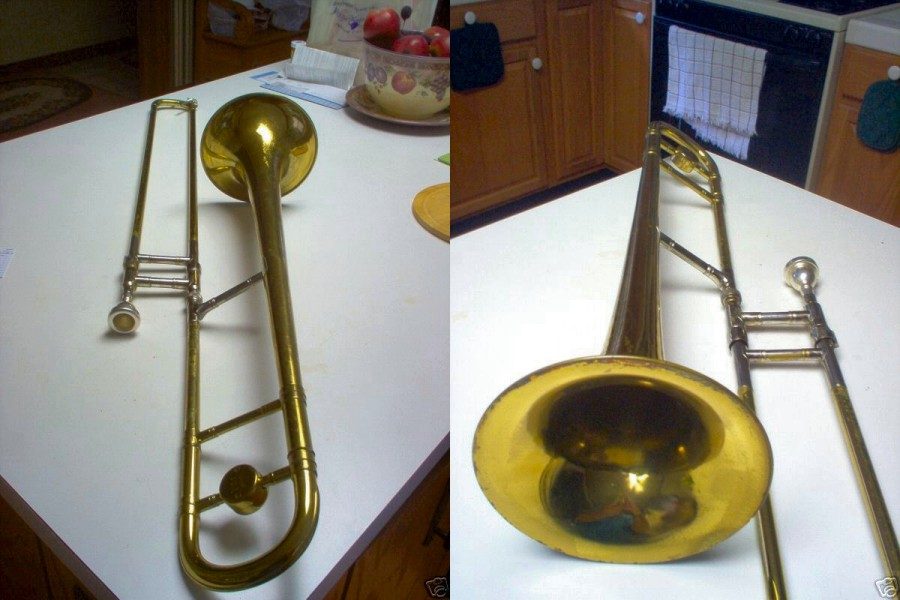


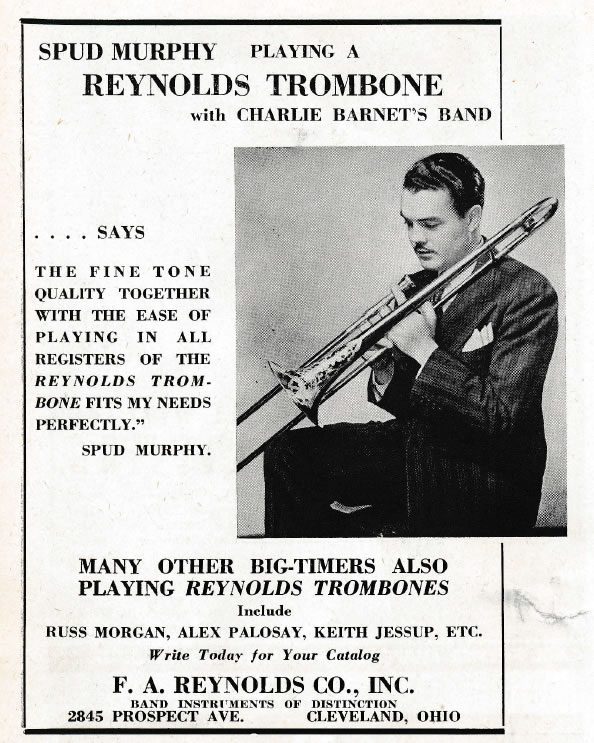
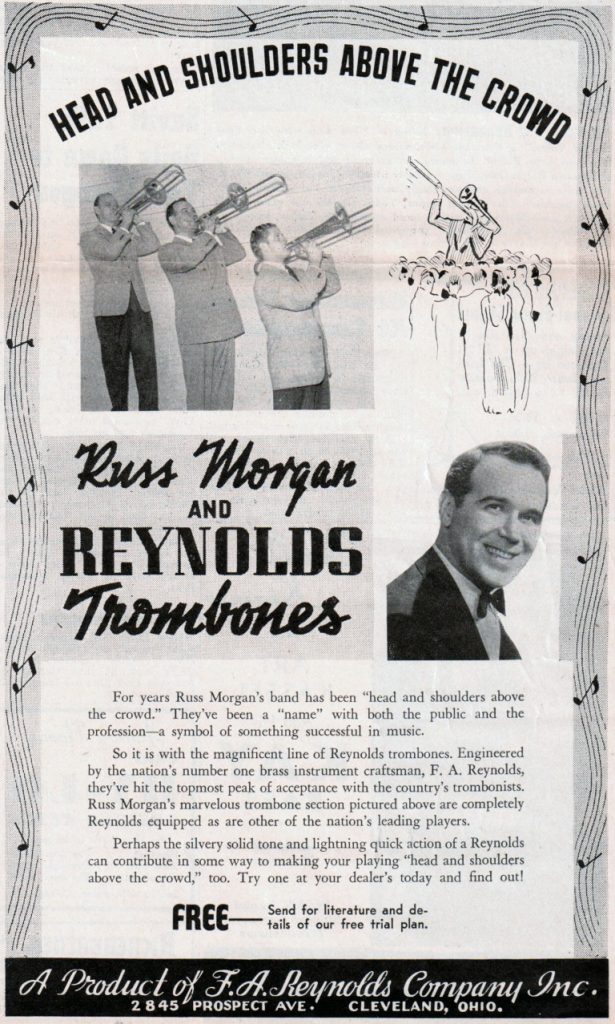

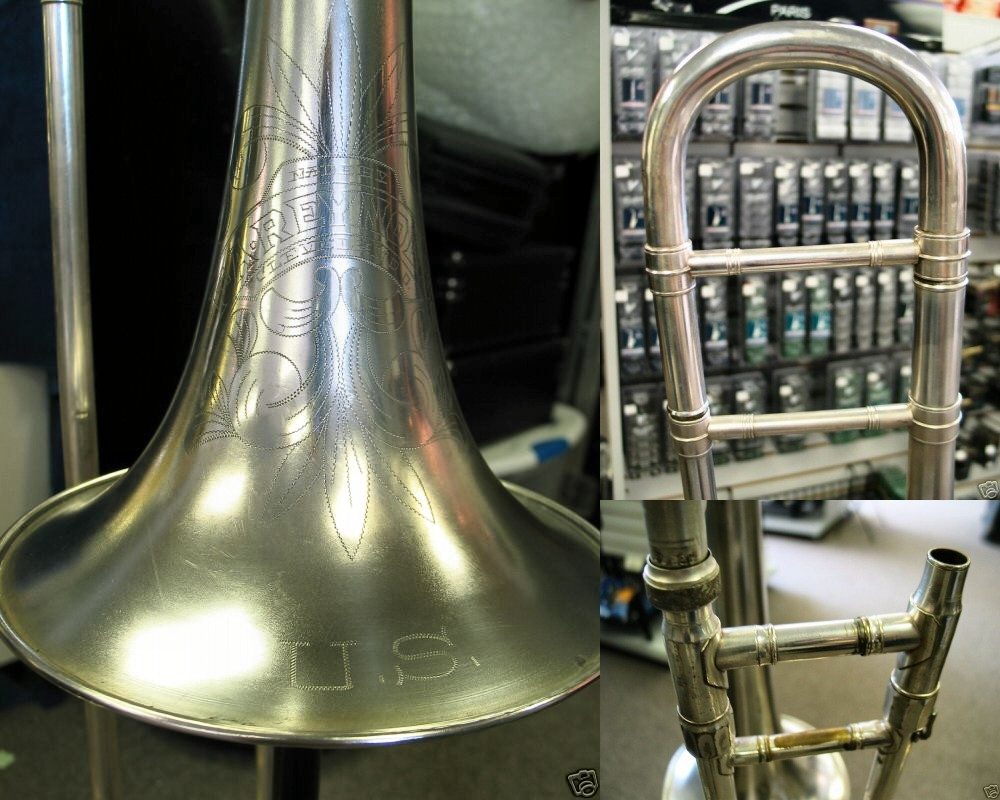
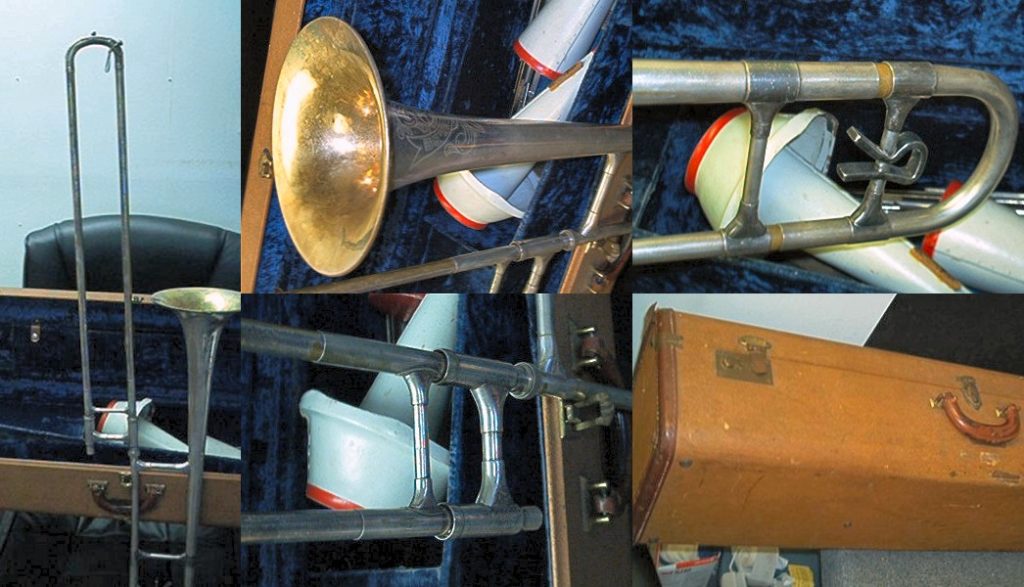
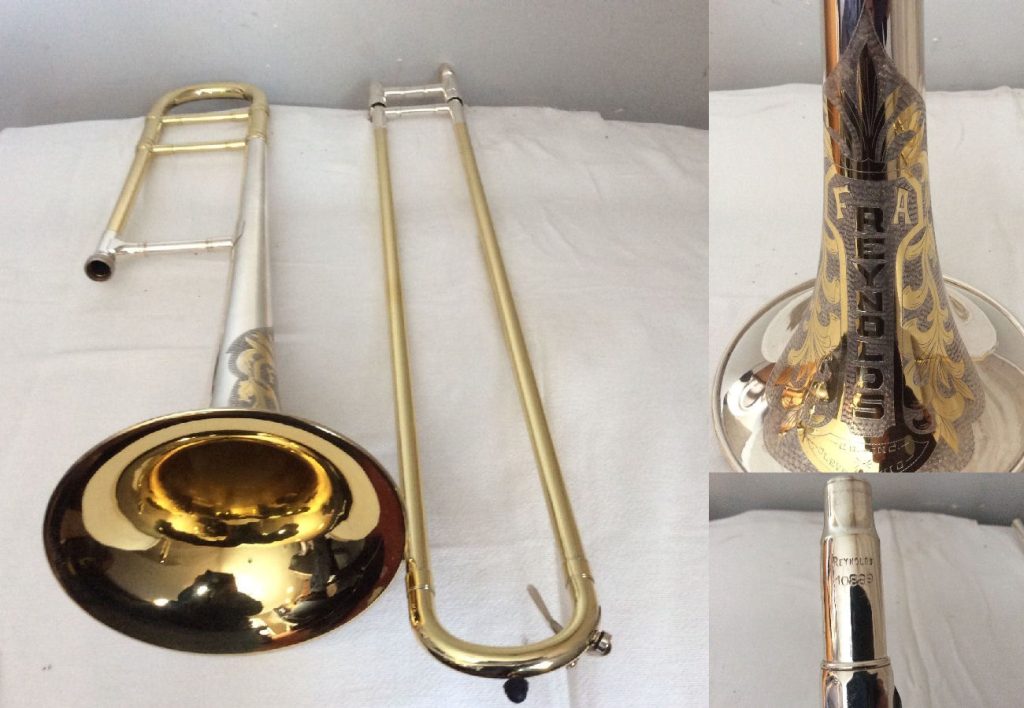
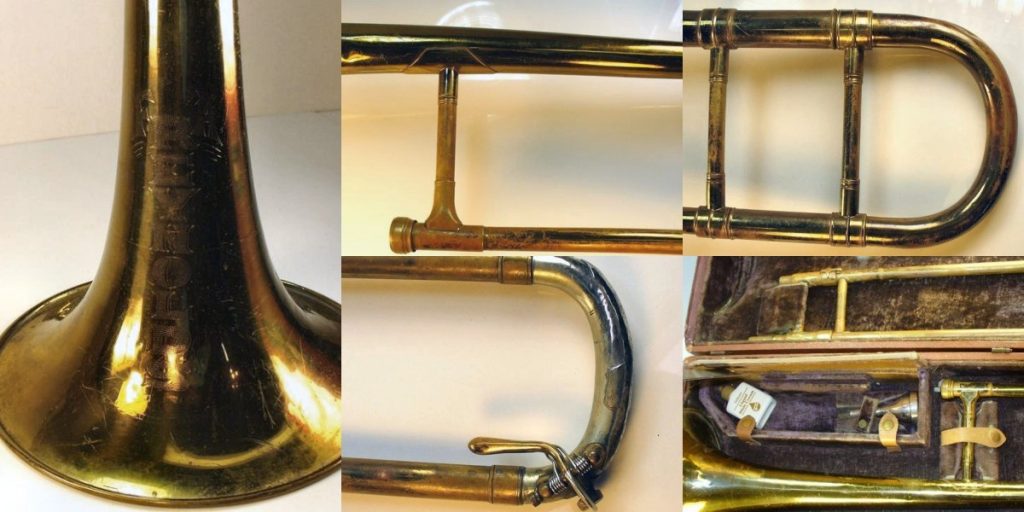
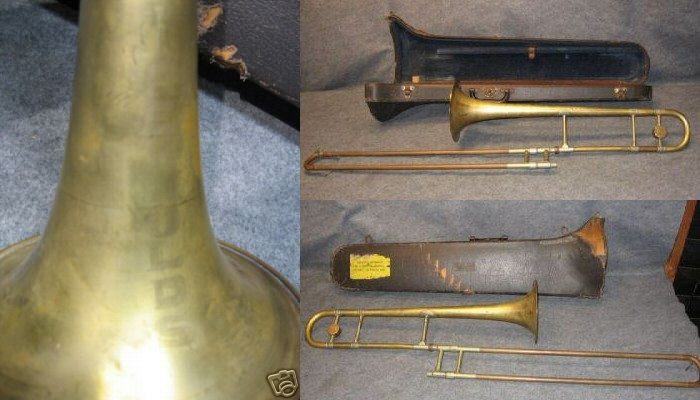
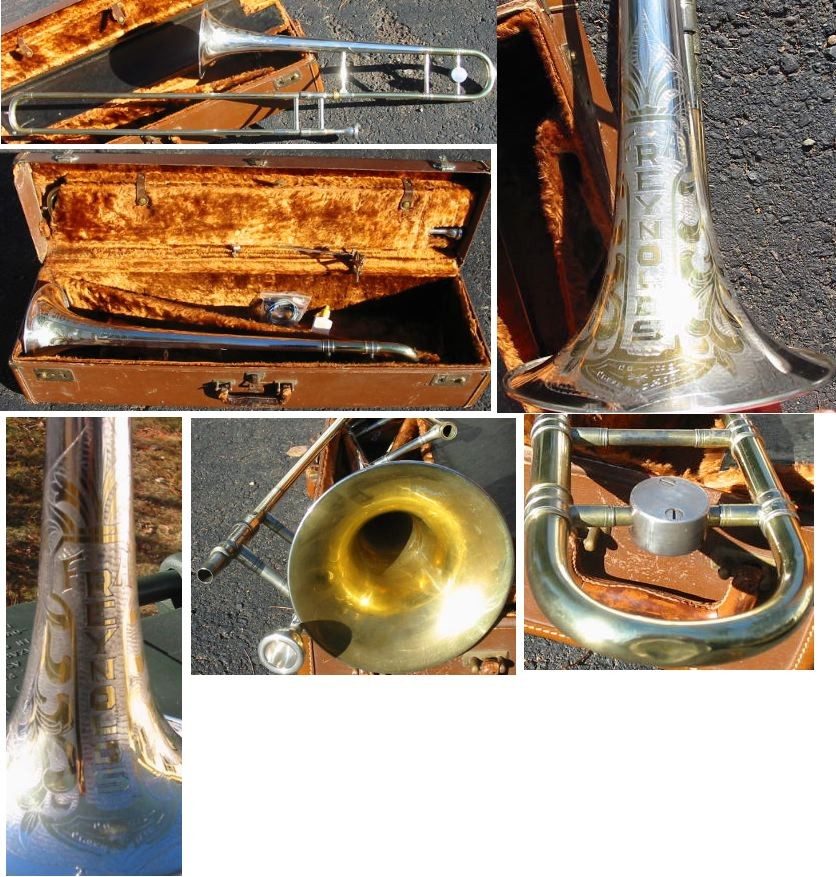

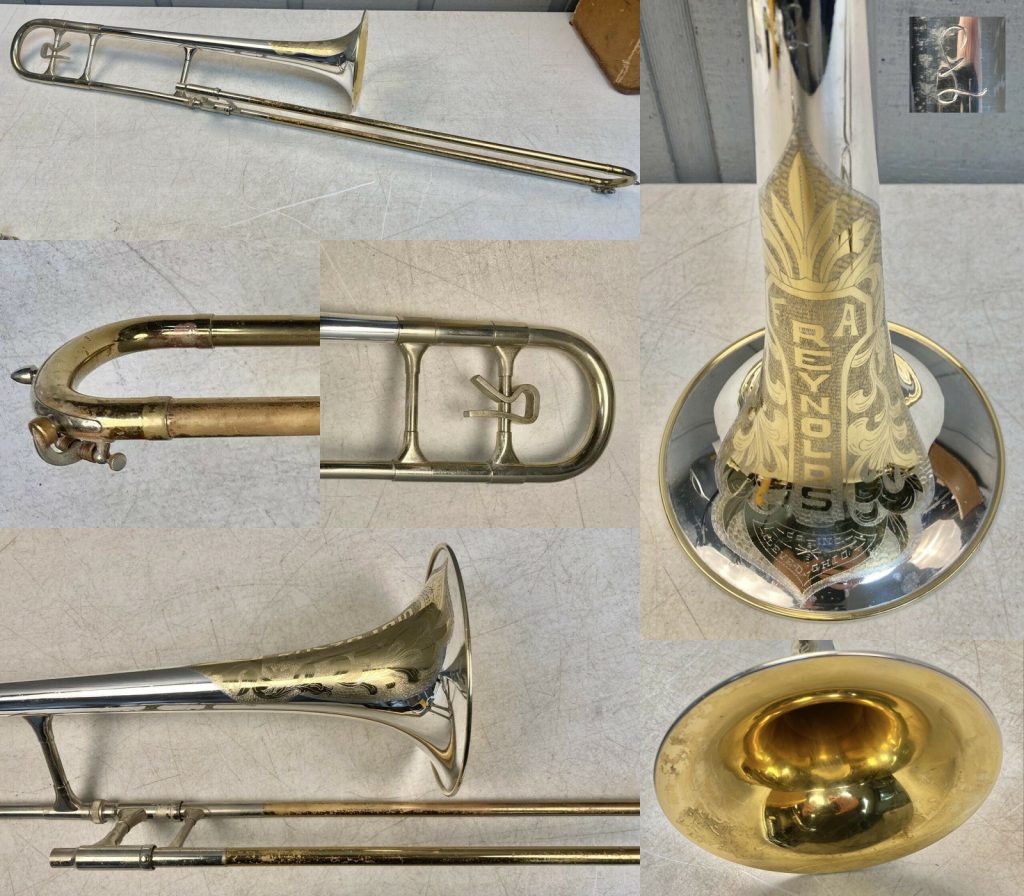
![Model 70 [SN 32431/>. Photos used with permission from Nisse Mannerfeldt [eBay: grovmessing].](https://contemporacorner.com/wp-content/uploads/2022/02/032431-800x600.jpg)
![Model 70 [SN 32431]. Photos used with permission from Nisse Mannerfeldt [eBay: grovmessing].](https://contemporacorner.com/wp-content/uploads/2009/03/032431.jpg)

![Model 71 [SN 60633]. Photos used with permission from eBay Member: bonebone9 and current owner, George Paree.](https://contemporacorner.com/wp-content/uploads/2009/03/060633.jpg)

![Model 77 [SN 54xxx/>. Photos used with permission from Wil Salo [eBay: tubatuna].](https://contemporacorner.com/wp-content/uploads/2022/02/tbn77-800x550.jpg)
![Model 77 [SN 54xxx]. Photos used with permission from Wil Salo [eBay: tubatuna].](https://contemporacorner.com/wp-content/uploads/2009/03/tbn77.jpg)
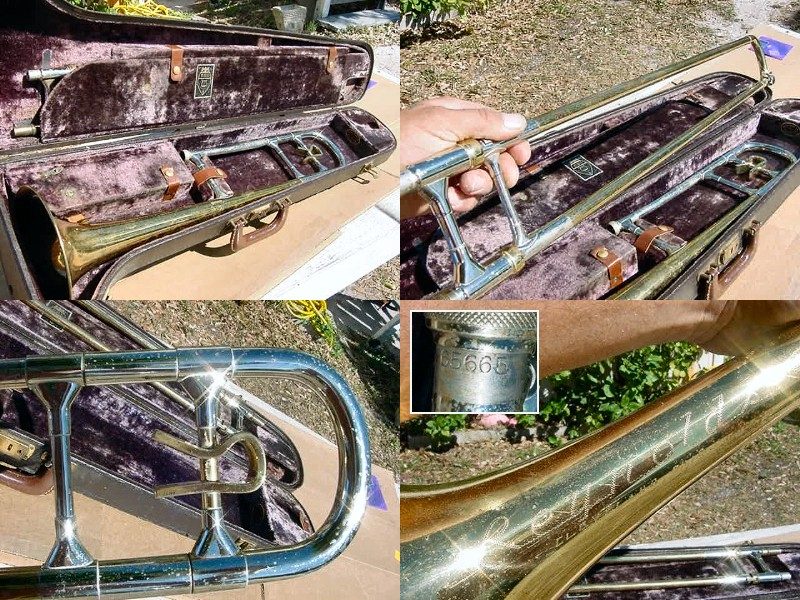
![Model TO-28 [SN 65665]](https://contemporacorner.com/wp-content/uploads/2022/01/065665.jpg)


![Model TO-38 [SN 267274]. Photos used with permission from Lauderdale Wind (eBay Member: algee2) .](https://contemporacorner.com/wp-content/uploads/2009/03/267274.jpg)